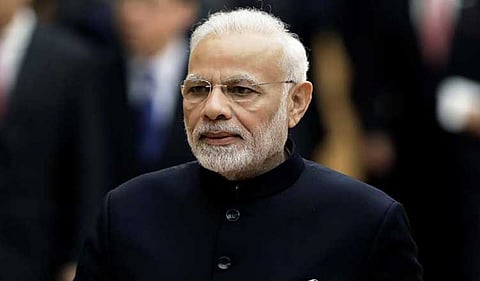
- Home
- Live Blog
- Breaking News
- Top Headlines
- Cities
- NE News
- Sentinel Media
- Sports
- Education
- Jobs

New Delhi: Giving a big push to its 100-day development agenda, and as part of securing people’s participation at every level, the Modi government is setting up community radio stations across all the 115 ‘aspirational districts’ in the country.
Community radio stations, which have a reach of between five to 20 km radius and do not need major infrastructure to set up, would be a crucial medium for informing locals about important issues, like government programmes, the weather, agriculture-related information, education, and local events, among others.
“Community radio has been identified as an important focus area in the aspirational districts. It would help in disseminating information at the grassroots level on major issues, like last mile connectivity,” a source told IANS.
The Ministry of Information and Broadcasting has been receiving a large number of applications for setting up community radio stations. The applications are first vetted by the Ministry of Home Affairs and the Ministry of Defence, before they are acted upon.
“Over 150 applications have come in, ranging from Jammu and Kashmir to the Andamans. We will interview those whose applications have got the relevant clearance, before giving the go-ahead,” the source added.
Educational institutions, Krishi Vigyan Kendras and even NGOs set up community radio stations, which are useful in reaching out to the community. All that these low-frequency stations require is a 50 watt transmitter and a six-foot by six-foot room to set up a 30-metre antenna.
In coastal areas, it is the community radio station that is useful in giving warnings about an impending cyclone, nearby shelters available, how to reach there, and phone numbers etc.
While FM radio stations are there in cities, in far-flung areas it is the community radio that people listen to for information, music and entertainment.
Community radio stations can generate revenue through advertisements, at the rate of seven minutes of ads per hour. However, they cannot do programmes promoting any commercial establishment or any political agenda. Government-run stations get ads from the Directorate of Advertising and Visual Publicity (DAVP).
There are currently over 250 community radio (CR) stations in the country. However, despite their immense usefulness there are still nine states and Union Territories that do not have CR stations.
The Wireless Planning & Coordination Wing (WPC), under the Ministry of Communications and IT, gives the licence to those whose applications are cleared for setting up CR stations. They are allocated frequencies based on the geo-coordinates. The WPC also takes care to ensure that the frequencies of the CR stations do not clash with FM and others.
Community radio stations are self-regulated. While their content is not monitored, there is state-level and district-level monitoring. The ministry also acts on complaints it receives from listeners. The CR stations are mandated to keep recordings of their programmes for up to three months, which the ministry can ask for at any time. (IANS)